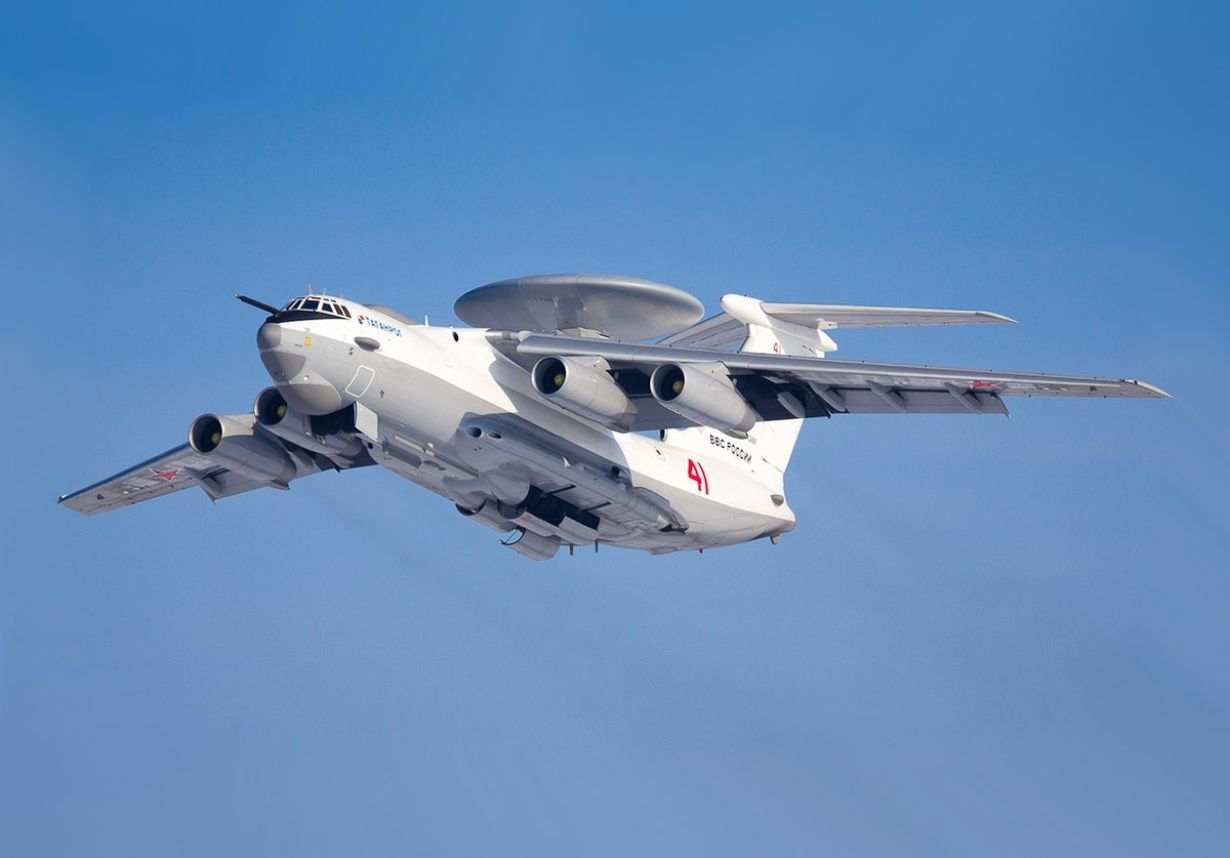In a recently released video, a drone allegedly sent by a Belarusian partisan group can be seen descending on the Russian A-50 airborne early warning and control (AEW&C) aircraft at the Machulishchy Airbase, Belarus.
The footage was made public by BYPOL, an organization of military dissidents in Belarus hostile to the Lukashenko government. They claim to have hit the A-50 on February 26 and caused significant damage to its radome and upper forward fuselage area.
According to BYPOL, this video was recorded over a period of two weeks as Belarusian partisans used civilian drones to perform aerial surveillance at Machulishchy military base.
Even though the exact timing of this reconnaissance is unknown, it does support BYPOL’s claims that they attacked an A-50 aircraft with a drone.
The organization claimed that two DJI drones effectively modified into kamikaze drones were used in the assault on the A-50.
Video shows Drone landing on a Russian A-50 AEWC Radar Dome that was supposedly attacked at #Machulishchy Air Base, #Belarus
The #drone successfully breached all air-defense measures & managed to enter a #Belarusian Airbase in broad daylight. #A50 #Russia #Ukraine pic.twitter.com/fKAAPdKLCw
— EurAsian Times (@THEEURASIATIMES) March 3, 2023
Some reports claimed each drone contained 200 grams (0.4 pounds) of TNT explosives and about 200 metal balls. However, the result of the attack has not yet been independently verified.
But, it appears that at least one drone could approach the A-50 near enough to land on it, though it is yet unknown how much damage was done to the $330 million AWACS.
On March 2, a trimmed version of the video in question and a version that was 2 minutes and 16 seconds long were shared on social media.
The footage appears to have been taken from a quadcopter-style drone because the rotors are occasionally noticeable at the edges of the camera frame. The video shows the drone hovering at a low altitude just above the airport’s runway before turning toward an A-50 in the flight line, which it approaches from behind.
The drone flies to a position directly above the plane, turns, and finally lands on the distinctive rotodome that houses the A-50’s primary radar antenna. After that, the drone takes off and returns to the direction it came from.
“For two weeks, Belarusian partisans conducted aerial reconnaissance at Machulishchy military airfield with the help of civilian drones purchased in a store,” BYPOL stated.
BYPOL explained that on one of the successful surveillance missions, the drone flew inside the airfield’s restricted area, flew close to a Russian A-50U aircraft, and even sat on the radar antenna (or “dish”) of the aircraft.

Doubt About The Attack’s Outcome
The latest video supports the possibility that the attack happened, but does not establish its success. As previously mentioned, BYPOL claimed that on February 26, two drones carrying explosives struck the A-50’s radar dish and cockpit, causing severe damage.
However, the aircraft appears undamaged in several satellite photographs of the air base that imaging company Maxar released.
Maxar has also made imagery available, which provides a slightly higher resolution image of the aircraft. pic.twitter.com/GsdLzDnsYm
— Bellingcat (@bellingcat) February 28, 2023
Furthermore, several days following the assault, on March 1, 2023, Belarusian Media networks broadcast footage of what they alleged to be the same aircraft taking off and heading back to Russia while appearing intact.
The aircraft flew to Russia for repairs since the damage it suffered prohibited it from carrying out further operations, according to Belarusian Hajun, a project that tracks the activities of resistance organizations on Belarusian soil.
The project also alleged that technicians from Russia were flown in immediately following the attack and worked on the A-50 for several days to get it back in a flyable state so it could be sent back to Russia.
Meanwhile, the reports of any such attack have been dismissed by the governments of Russia and Belarus.
Nevertheless, the release of the recent video is noteworthy since it demonstrates that it is possible to get past the air defenses that are supposed to protect the airfield.
Furthermore, the attack on the A-50 shows that once properly customized, even commercially accessible drones can represent a very genuine threat.
Moscow is also being reminded once more of the possible vulnerability of its air defense systems and military aircraft, which have previously sustained significant losses and damage, particularly at sites located far inside the country.
That being said, the lack of reaction to the presence of a quadcopter-style drone at a low level and slow speed in broad daylight indicates how challenging it is to counter such drones.
- Contact the author at ashishmichel(at)gmail.com
- Follow EurAsian Times on Google News




